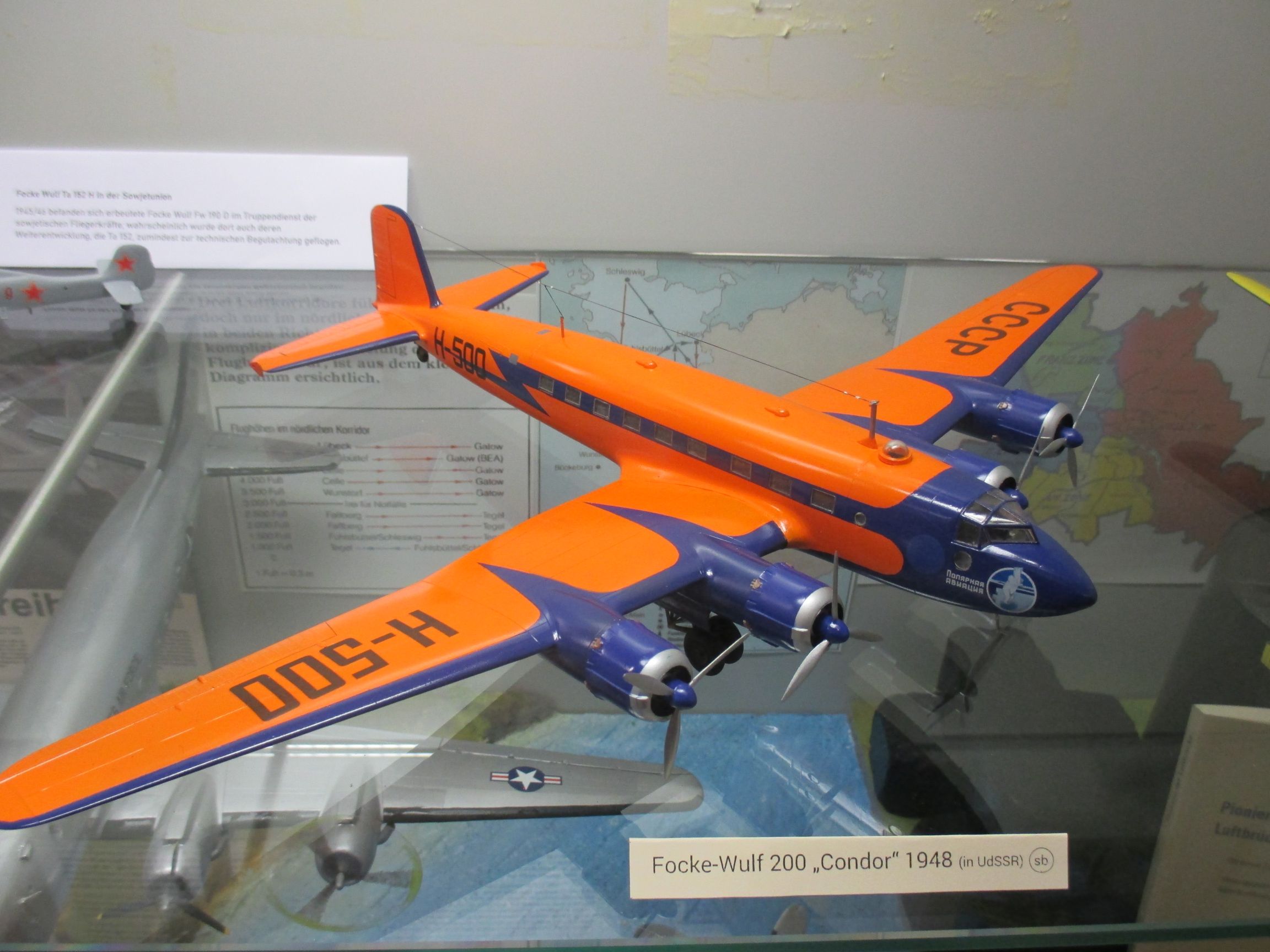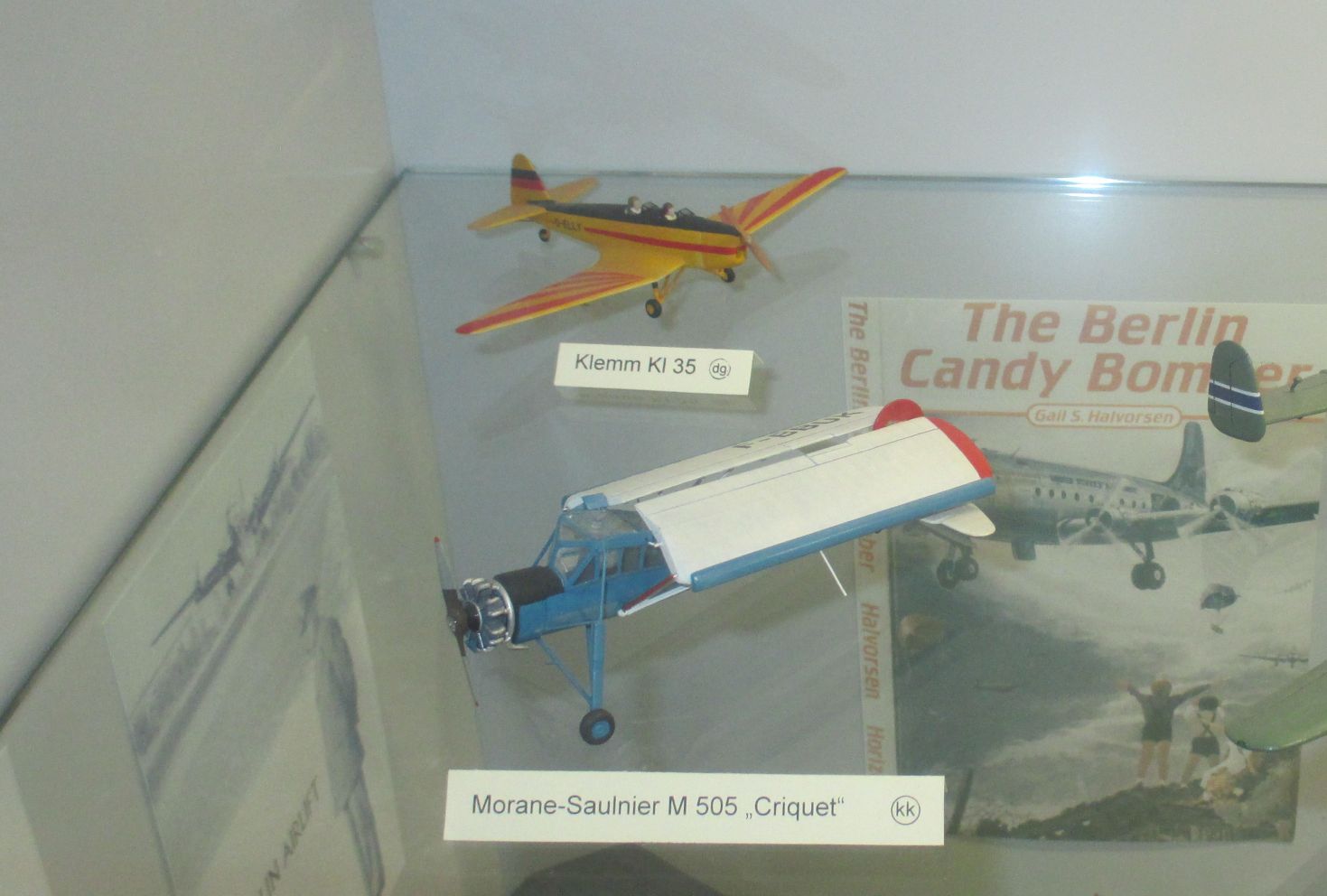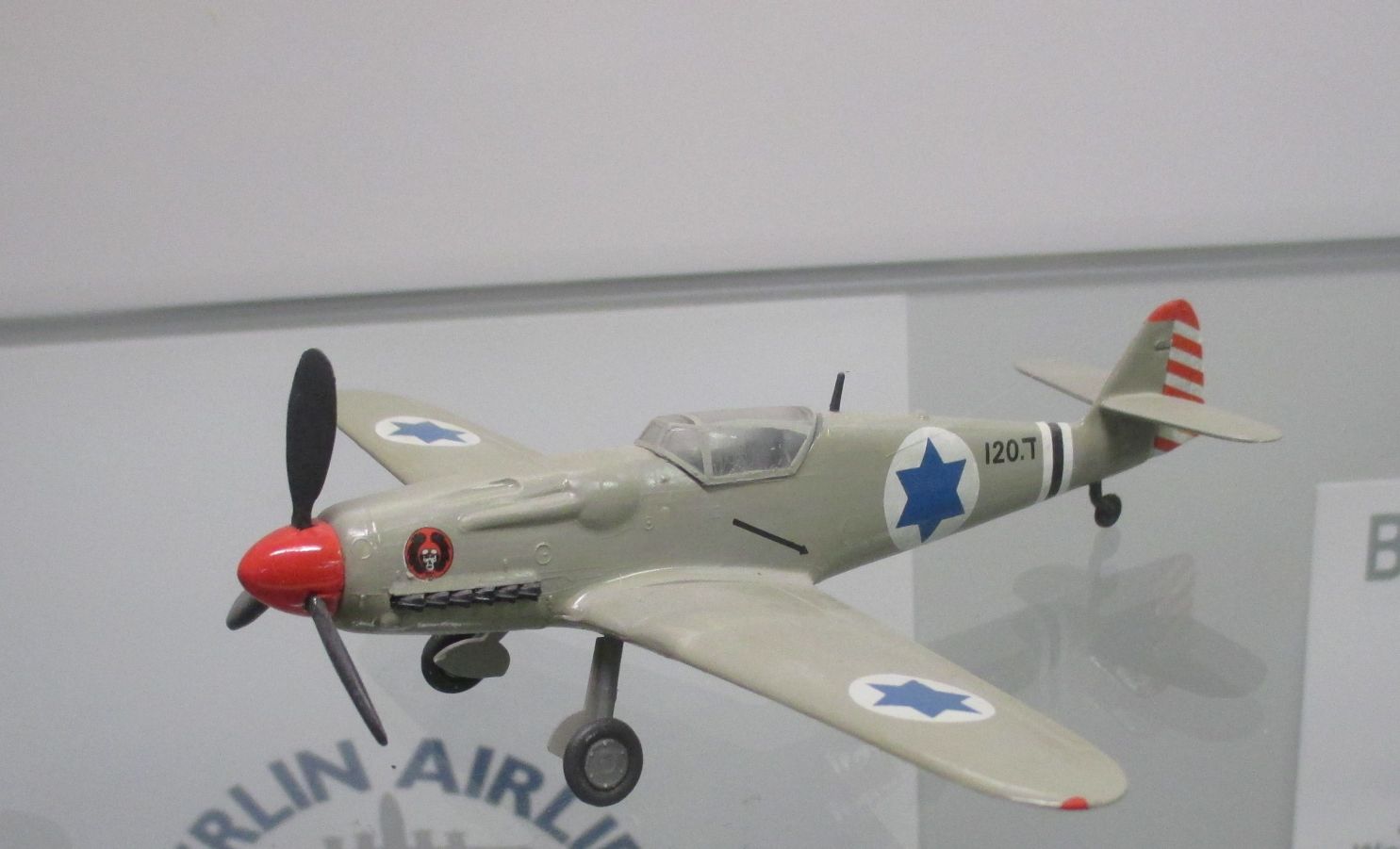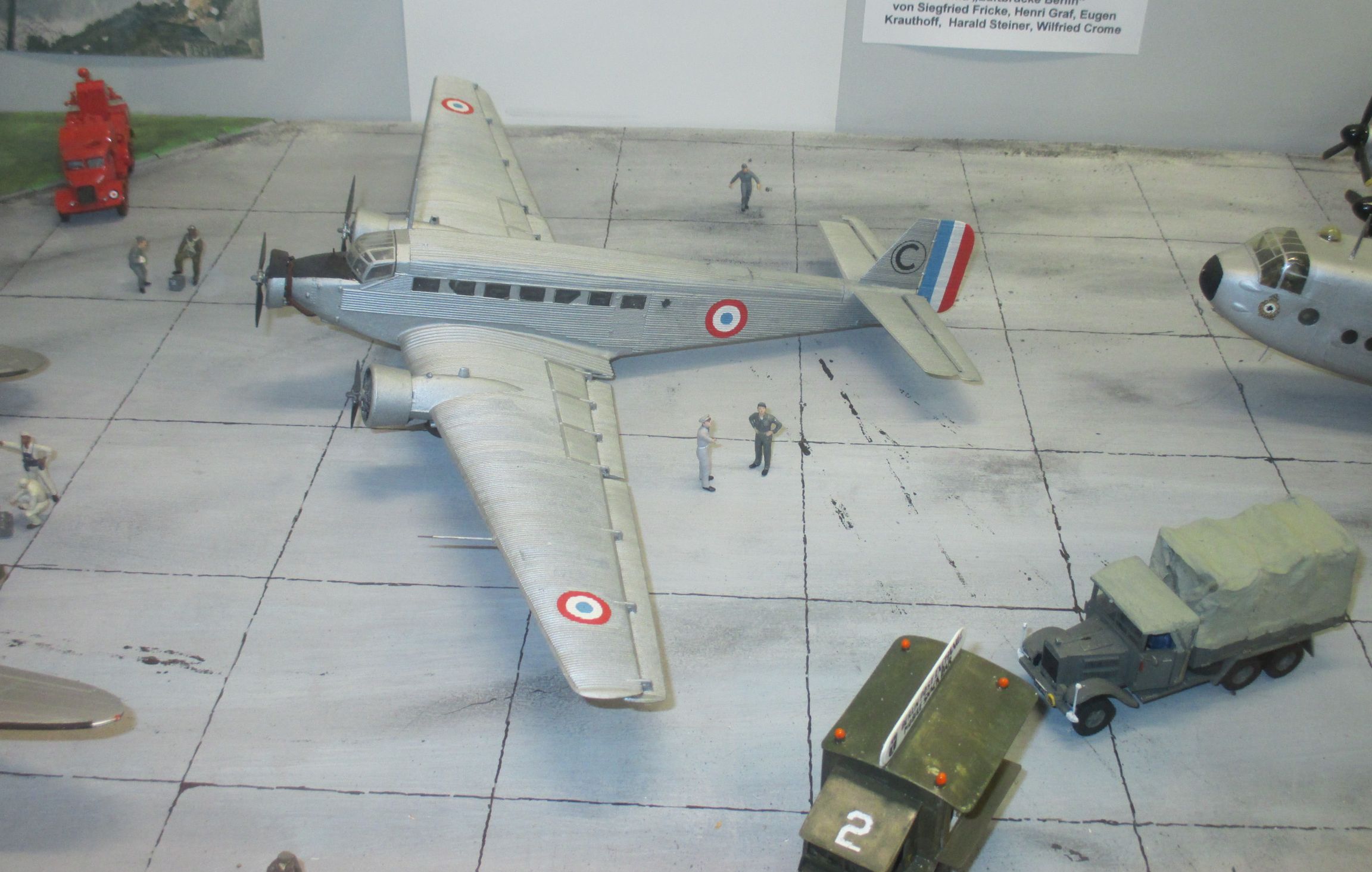Model of the month Juli 2021 Fw 200 Condor
Foreign Flags , From original to model

The legendary Fw 200 Condor operates as a booty plane in the Soviet Union after 1945
An independent part of the collections of the Aviation Museum Hanover-Laatzen are the round about 1,000 scale models, mainly of the international standards 1/72 and 1/48.
Such true-to-the-original miniatures give observers of the history of technology in museums an "overview", not only of the individual exhibit (sometimes even as the only possibility of a three-dimensional display if there is no surviving original), but also of the lines of development of aircraft construction through the arrangement and comparison of the exhibits. Sometimes they even close gaps in the presentation of the originals. The quality of their craftsmanship alone is a pleasure to behold.
Today we would like to present a whole showcase instead of one specific scale model – examples of german aircraft used abroad in the years after the war.

From "Stork" to "Cricket". In France the world's first STOL aircraft, the Fieseler Fi 156 Storch, becomes the MS 505 Criquet with a radial engine - here with folded wings. Above, the Klemm Kl 35 training and sports aircraft, which has been rebuilt and flown all over the world.
Variations in 1/72 scale
A colourful assembly of types and nationality markings can be found in display case No. 88 in hangar 2. Training and liaison aircraft next to bombers, commercial, float planes and fighters. From plywood veterans to jet fighters. All designed in Germany and flown at times when Germans were not allowed to fly anything at all. Let´s have a closer look…
Under foreign flags
In 1945, the Second World War is over and Germany is occupied. The victorious Allies requisition, confiscate, pack up and take away, in short: they steal patents, construction plans, equipment and machines - just as victors do, including Germany in the years before. Now, all Germans are forbidden to build aircraft, to fly, even to own an aircraft component, with the severest of penalties.
But around the globe, German designs continue to be flown, used, at least tested, and in many cases even built. For in addition to the legitimate acquisition and licensed construction of German types abroad until 1945 (example in the display case: the Klemm Kl 35 sports and training aircraft), there are now looted aircraft in large quantities (on display: the Arado Ar 196 floatplane, the Focke Wulf Fw 200 Condor commercial aircraft). In addition there is the production of German combat aircraft in the countries occupied or dependent on Germany in the previous years, which resumed production under a new name and on their own account (examples: several versions of the Messerschmitt Bf 109 fighter, the Arado Ar 96B trainer aircraft as Avia L-2 and Siebel Si 204 D liaison aircraft as Aero C-103).
And not infrequently, models were further developed or varied (Fieseler Fi 156 into Morane Saulnier MS 505).

German components, assembled in Czechoslovakia, make up the first fighter aircraft of the young state of Israel - the Avia S.199.
Kinds of collaboration
Especially the highly developed aviation industries in France and Czechoslovakia, forcibly integrated into the German armament industry, now converted successful designs for their own use and export (Me 109 G-14 with Jumo 211 as Avia S.199 i.e. for Israel – which by the way led to the remarkable historical situation of former ´nazi fighters´ defending the reborn jewish state).
In fact, many new aircraft designs in France, the USA, the Soviet Union, and also in Great Britain were clearly influenced by efforts and success of the German aeronautical industry, which had been in a leading role up to 1945, until well into the 1950s. They profited directly from basic research, design and documentation of testing and deployment. The recruitment (in the case of the Soviet Union, even deportation) of skilled German personnel played an important role here.
Quite a few booty planes were taken over by the occupying powers for a while and flew over Germany; one example is the Ju 52, which was used by England and France for civilian and military purposes. In the adjacent showcase on the Berlin Airlift, there is such an "Iron Annie" with French cockades, situated in the large airfield diorama.
Well, and the moral of the story? You can always use a good aircraft. Or: Physics seems to be more enduring than politics... sb
Were we able to arouse your curiosity to discover more? Then we would be delighted to welcome you to Ulmer Straße opposite the Hanover exhibition grounds.
Another classic plane under a foreign flag. The Ju 52 as a French blockade runner during the Berlin Airlift.

